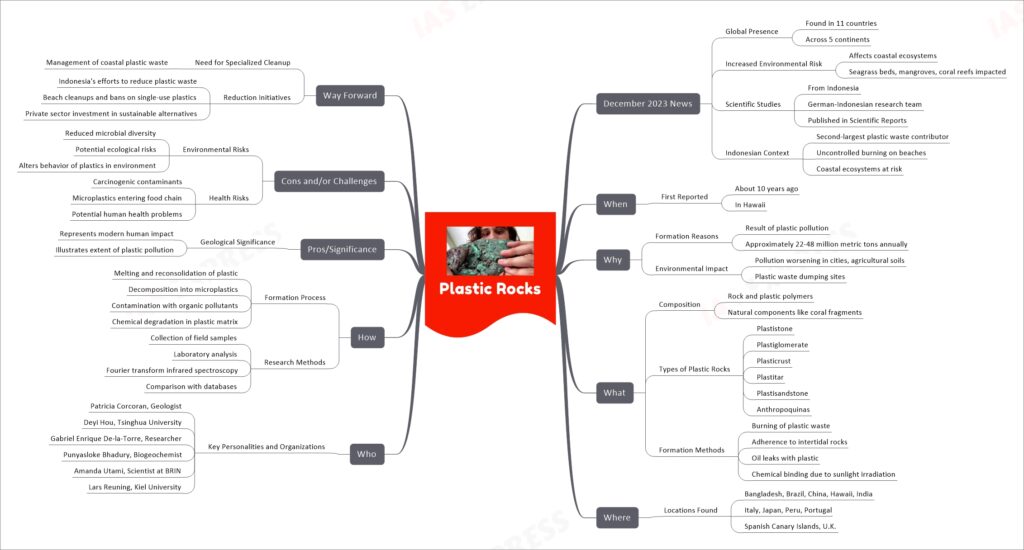[Newsbits] 20.12.2023 – Lumpy Skin Disease, Great Unconformity, Indian Forest and Wood Certification Scheme & more

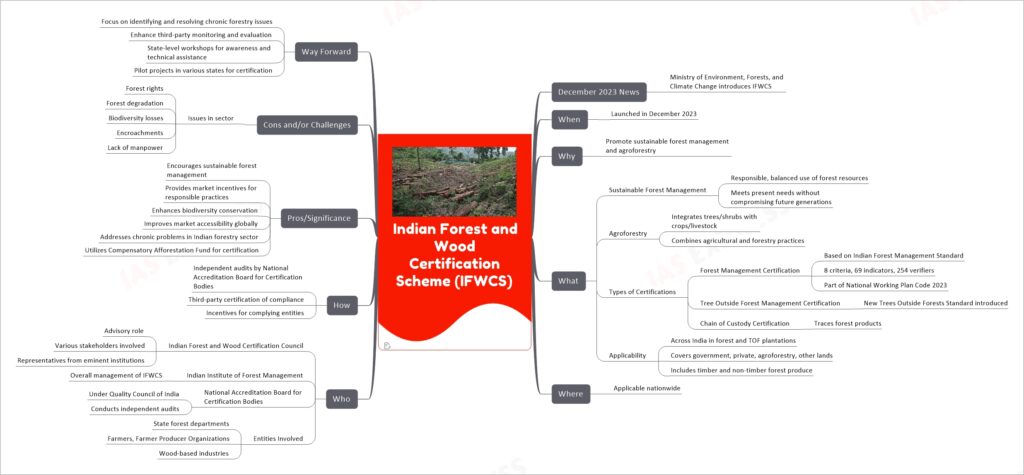
Summary: The Indian Forest and Wood Certification Scheme is a national initiative aimed at promoting sustainable forest management and agroforestry. It includes certifications for forest management, tree outside forest management, and chain of custody. This scheme is applicable throughout India and involves multiple stakeholders, including state forest departments, farmers, and wood-based industries. The scheme’s implementation is expected to provide market incentives for entities adhering to sustainable practices, thereby addressing various challenges in the forestry sector such as forest rights issues, forest degradation, and biodiversity losses.

The Central Goods and Services Tax (Second Amendment) Bill, 2023, and the Provisional Collection of Taxes Bill, 2023, are significant legislative developments introduced in December 2023. The former amends the Central Goods and Services Tax Act, 2017, primarily to establish a Goods and Services Tax Appellate Tribunal, aligning the Act with the Tribunal Reforms Act of 2021. This tribunal aims to relieve the burden on High Courts and provide a second appellate authority within the GST framework. Key changes include modifications in the qualifications for tribunal members and adjustments to age limits. The latter bill repeals the Provisional Collection of Taxes Act, 1931, and focuses on providing immediate effect to certain customs and excise duty provisions. It ensures fiscal responsibility by not involving expenditure from the Consolidated Fund of India. Both bills reflect the Indian government’s efforts to streamline tax legislation and administration.
Summary:- Plastic rocks, a novel and alarming form of pollution, have been found globally, across 11 countries and 5 continents, illustrating the severe extent of plastic pollution. First reported about a decade ago in Hawaii, these rocks form from the combination of rock and plastic polymers, mainly due to human waste. Various types, including plastistone, plastiglomerate, and plasticrust, have been identified. They are often created through burning plastic waste or its adherence to rocks, among other methods.
This phenomenon poses significant environmental risks, including the degradation of coastal ecosystems and marine life due to microplastic formation and toxic chemical release. It also highlights the health risks associated with carcinogenic contaminants. The formation of plastic rocks represents a substantial ecological footprint of modern human activity.
Addressing this issue requires a specialized approach to manage coastal plastic waste. Indonesia, a major plastic waste contributor, is actively working towards reducing this impact through beach cleanups, single-use plastic bans, and sustainable alternatives. These efforts are crucial in mitigating the environmental and health risks posed by plastic rocks.
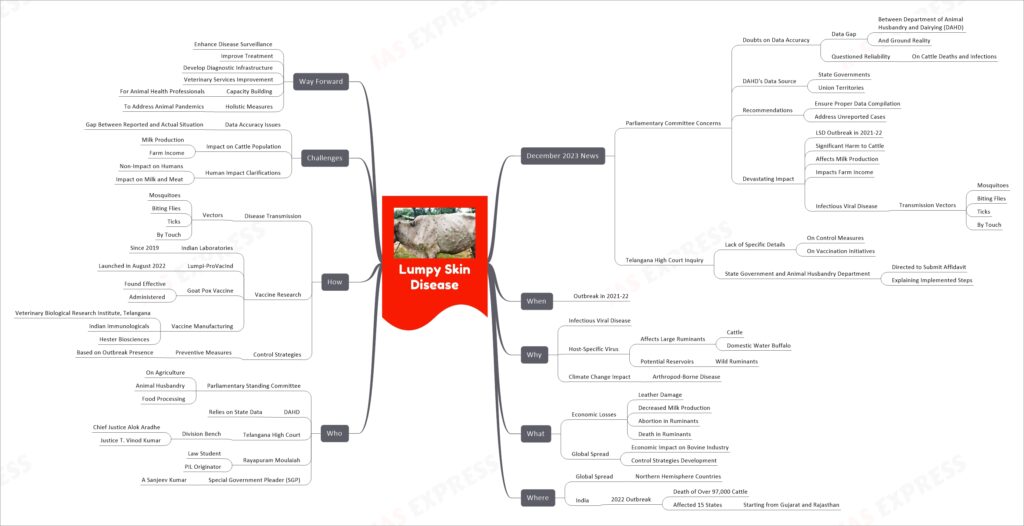
Lumpy Skin Disease (LSD) is a significant infectious viral disease primarily affecting cattle and domestic water buffalo, with potential transmission to wild ruminants. Notably prevalent in the northern hemisphere, its emergence has been linked to climate change. The disease is characterized by severe economic losses due to cattle deaths, reduced milk production, and leather damage. In India, a notable outbreak in 2022 resulted in over 97,000 cattle deaths. Concerns about the accuracy of data on cattle deaths and infections have been raised, leading to recommendations for better data compilation and disease control. Efforts are ongoing to develop and administer effective vaccines, such as Lumpi-ProVacInd and the goat pox vaccine. The need for enhanced disease surveillance, improved veterinary services, and holistic measures to address such animal pandemics has been emphasized.
The Wireless Planning & Coordination Wing (WPC), functioning under the Ministry of Communications and the Department of Telecommunications in India, is responsible for managing the frequency spectrum, including licensing and monitoring. It also regulates the use and application of radio and wireless devices in India. WPC is headquartered in New Delhi and has regional branches in major cities.
The Wireless Monitoring Organisation (WMO), established in 1952, acts as the vigilant eye and ear of the WPC. It is responsible for monitoring all wireless transmissions in India and ensuring interference-free radio-communication services. The WMO comprises a network of 28 Wireless Monitoring Stations, including five International Monitoring Stations and one International Satellite Monitoring Earth Station located in Maharashtra. The organization plays a crucial role in spectrum monitoring, measurement, and inspection for efficient radio frequency spectrum management. Recent enhancements in the WMO include state-of-the-art equipment procurement, infrastructure improvements, and plans for further augmenting its capabilities, showcasing its commitment to technological advancements and operational efficiency.
In December 2023, the Wireless Planning & Coordination Wing (WPC) and the Wireless Monitoring Organisation (WMO) of India celebrated the International Monitoring Station (IMS) Day. This event, held on December 19, 2023, marks a significant milestone in the history of wireless monitoring and spectrum management in the country. It underscores the dedication of the personnel involved in ensuring an interference-free spectrum for public telecom services and wireless users in India.
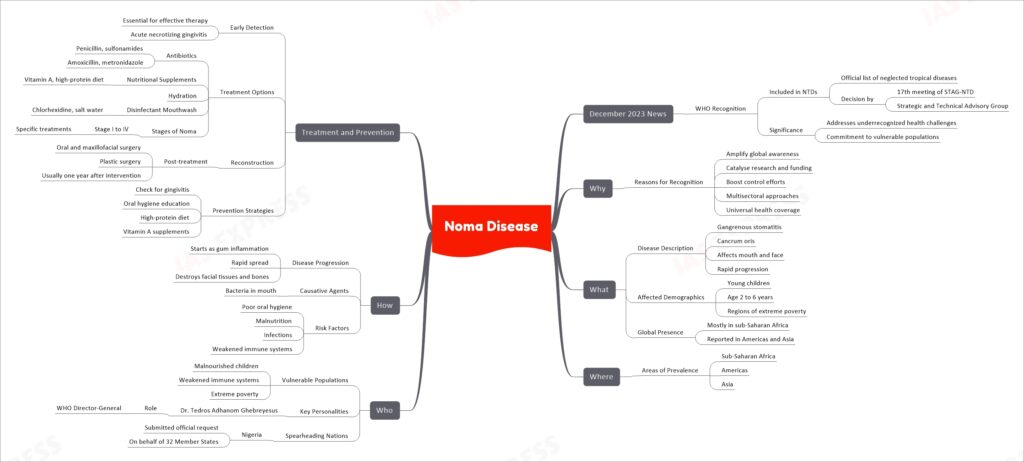
Noma disease, recently recognized as a neglected tropical disease by WHO, is a severe gangrenous condition affecting the mouth and face, primarily impacting malnourished children aged 2 to 6 in poverty-stricken regions. Its rapid progression leads to facial tissue and bone destruction, often resulting in death or severe disfigurement. Noma is caused by oral bacteria, exacerbated by poor hygiene, malnutrition, and weakened immunity. Early detection and treatment, primarily through antibiotics and nutritional support, are crucial. WHO’s inclusion of noma as an NTD underscores its commitment to addressing this long-neglected health challenge, aiming to boost awareness, research, and multisectoral intervention efforts.
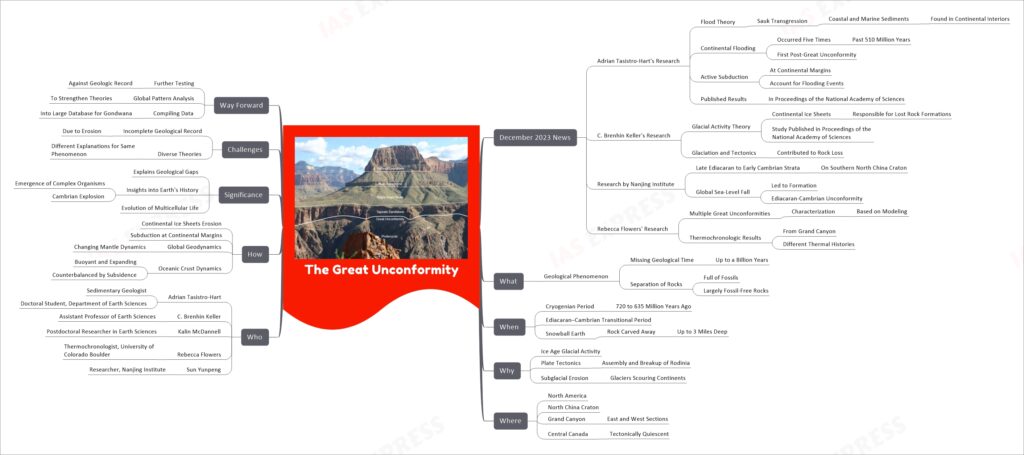
The Great Unconformity is a significant geological phenomenon characterized by a massive gap in the Earth’s geological record, spanning up to a billion years. It separates fossil-rich rocks from older, largely fossil-free rocks. Recent studies in 2023, including those by Adrian Tasistro-Hart and C. Brenhin Keller, have proposed different theories to explain this enigma. Tasistro-Hart suggests that continental flooding caused by active subduction at continental margins, particularly during the Sauk Transgression, contributed to the Great Unconformity. Keller’s research points to the role of glaciation during the Cryogenian period. Other researchers, like Rebecca Flowers, argue that there could be multiple Great Unconformities caused by a combination of factors, including glaciation and tectonics. These studies not only attempt to explain the geological gaps but also explore the implications for Earth’s history and the evolution of complex life.
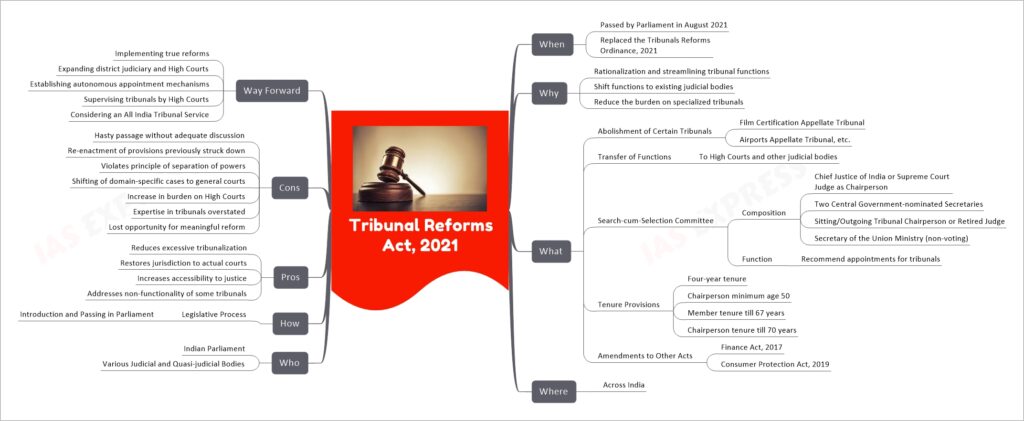
Summary: The Tribunal Reforms Act, 2021, represents an attempt to streamline the tribunal system in India by abolishing certain tribunals and transferring their functions to existing judicial bodies. While it aims to reduce the burden on specialized tribunals and increase accessibility to justice, the Act has faced criticism for its hasty passage, potential violation of the principle of separation of powers, and for reintroducing provisions previously struck down by the Supreme Court. The way forward includes implementing true reforms, expanding the judiciary, and establishing autonomous mechanisms for appointments and oversight.
If you like this post, please share your feedback in the comments section below so that we will upload more posts like this.
